By Kurt Lawton
Farmer ingenuity, sometimes in tandem with equipment company innovators, has long succeeded in expanding a practice or making a widget work better. It’s especially intriguing if an idea brings an old piece of seldom-used machinery back to life.
Remember that rotary hoe, parked in the tall grass somewhere behind a shed? Mark Seipel remembers as he sold truckloads of them for several decades. He is now promoting a practice for their revival as a cover crop seeder.
Seipel, a sales representative for Montag Manufacturing, says his year-long journey in 2020 to help farmers try early cover crop interseeding was formulated by talking to farmers at a winter 2019 meeting.
“Some experienced cover crop farmers wanted to try interseeding into early corn at V3 to V6 growth stage. Since it’s a narrow window to cover a lot of acres, we knew it had to be fast and adaptable to numerous row spacings and crop residue environments,” Seipel says. “That’s what led us to the rotary hoe.”
Not seeing many rotary hoes in use anymore, Seipel thought this would be a great opportunity to help get farmers into cover crops by using existing equipment. “My focus was adding a good seed delivery system that would vary the seeding rate and the speed, so the right rate was applied no matter if you’re going 4 or 15 miles per hour,” he says. “We achieved that with our Montag Gen II 2108 system.”
Seeding Rig Tours Iowa
Last winter, Seipel partnered with Zoske’s Sales & Service in Iowa Falls, IA, that built a 20-ft. rotary hoe and mounted the Montag air seeder and hoses on it, designed for easy fit on a trailer. Sarah Carlson with Practical Farmers of Iowa (PFI) also partnered in this project by sending out alerts to find farmers with interest to try cover crop interseeding in corn with a rotary hoe.
Seipel loaded up the rig in early May 2020 and crisscrossed the state several times in eight weeks, helping more than 15 farmers test early cover crop interseeding. Cornfield trials included 5 to 60 lbs./acre cover crop seeding rates in 30-, 40- and 60-inch corn row spacings. Field conditions ranged from conventional to no-till, with light crop residue to heavy corn-on-corn crop residues.
Mike Williams, crop production manager for Amana Farms, was one of a handful of farmers that Seipel lined up. “We have a lot of cattle, and the idea of gaining more biomass growth to improve cover crop grazing in late-fall was very appealing, so we did a 250-acre trial,” he says.
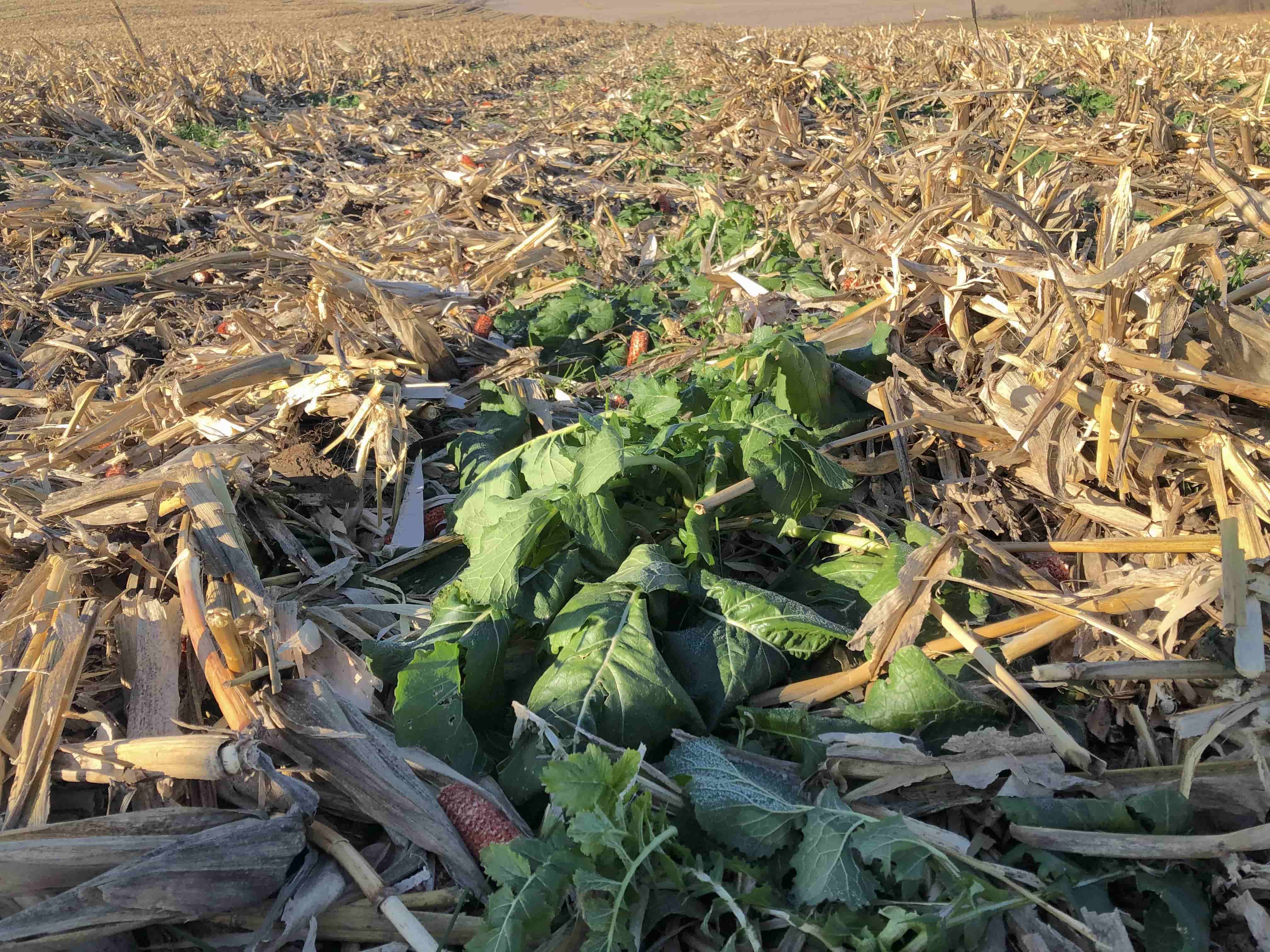
Since Williams usually plants corn in 20-inch rows, he decided to shut off every other row on his planter and test 40-inch corn. His goal was to give both cover crops and corn more sunlight access. On June 13-14, he seeded a five-way mix of turnips, tillage radish, cowpeas, annual rye and crimson clover.
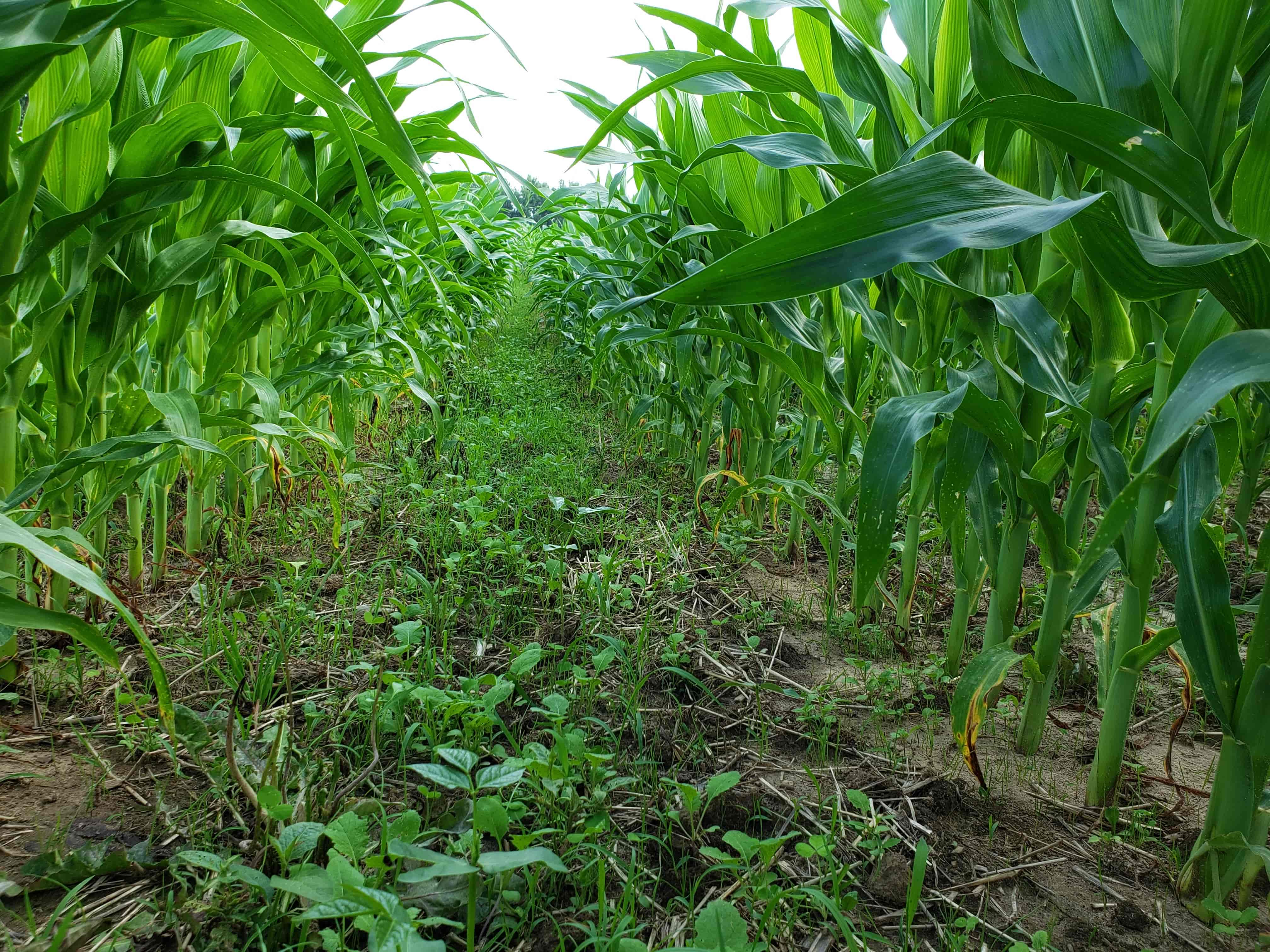
“The rotary hoe and Montag system worked really slick. We just pinned up the rotary tines over the row, set the seeding rate and zipped through the field at about 12 to 14 mph,” he says. “All the cover crops emerged.”
Drought Impacts Cover Crop Stand
Unfortunately, it stopped raining in July and August, followed by the infamous August 10 derecho, where 80 to 100 mph winds flatted his crops. Turnips and radishes survived the drought best, with some cowpeas and annual ryegrass.
"We had 40 acres hit the hardest. The corn was beat up, which allowed sunlight in to grow lush cover crops," says Williams. "It was tough harvesting the corn, but the fall grazing was excellent given the drought. The cows even pulled the turnips and radishes to eat them."
Several USDA-NRCS soil scientists visited the field with Seipel and Williams in September and November to examine the rotary hoe cover crops practice. They were impressed and extremely excited with what they saw regarding soil health and grazing, Williams adds.
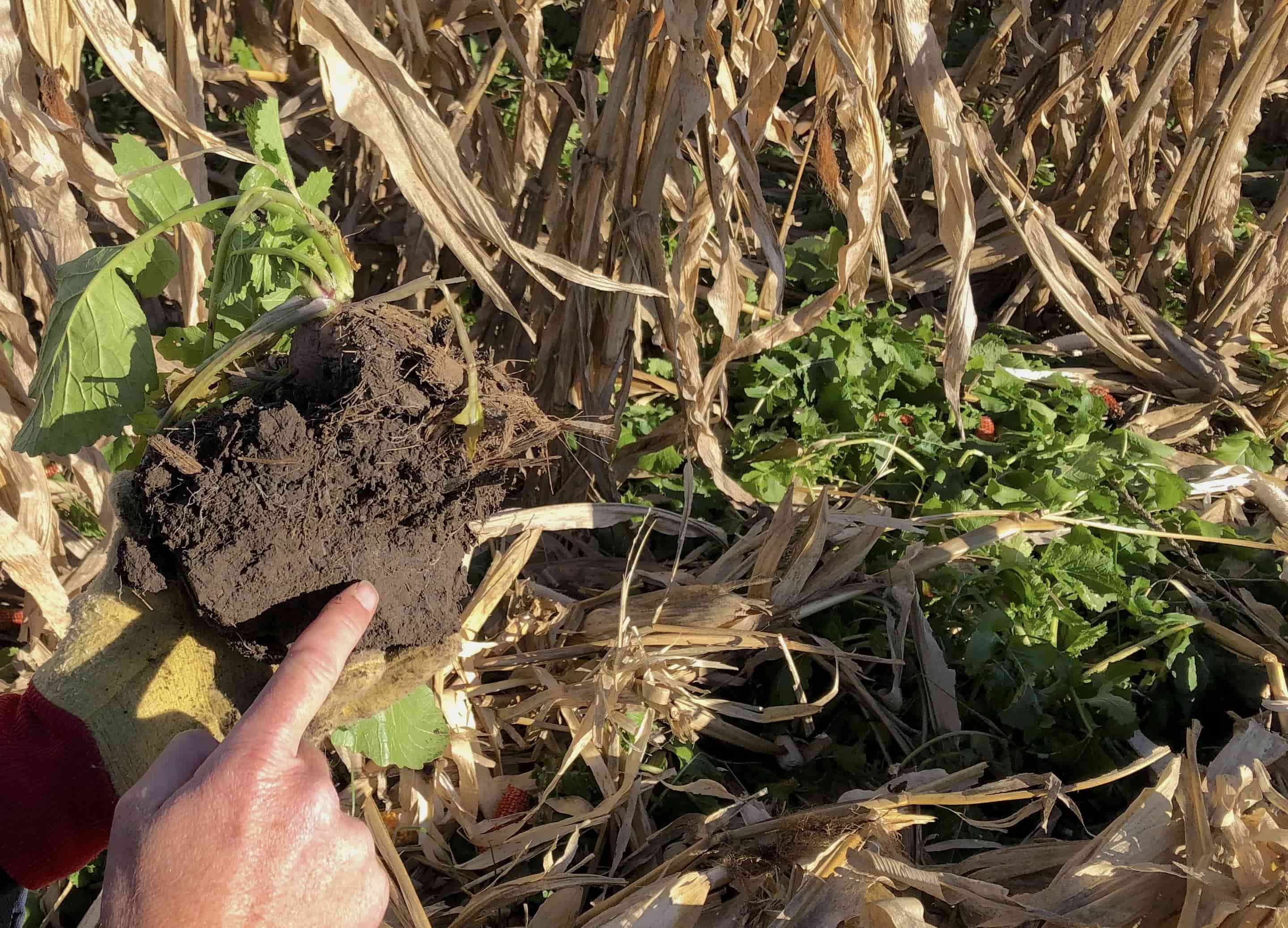
"Given the challenges, we saw a win-win — we gained grazing benefits, soil health and water quality benefits, and no loss in crop yield compared to non-cover crop fields," Williams says.
"We’re certainly intrigued and think there’s a ton of merit with this practice, so we will do it again."

Another farmer in the Montag program who tried rotary hoe interseeding also faced a drought. Nathan Anderson, near Cherokee, liked the early cover crop seeding aspect for his cow-calf operation to graze. A cover crop user for 10 years, he tried some broadcast interseeding in 2019 and liked the biomass results when they received timely rains.
Grazing Cover Crop Goals
“Our goal is to graze cows on perennial pastures from May until harvest, then turn cows onto corn stalks with cover crops — a forage chain to reduce our feed costs,” Anderson explains. “It gives livestock a better and healthier life on the landscape, doing what they are designed to do — to graze and return fertility to the soil.”
Anderson liked the Montag air seeder’s speed and coverage on the rotary hoe as he seeded two field areas in mid-May and early June. Both species blends struggled to emerge and grow in dry soil and with competing corn shading. “During July and August, we had one inch of rain, so what emerged early burnt up in a hurry,” he adds.
The value of cover crops was learned by Anderson long before he began farming in 2010. His uncle would seed winter rye after silage harvest and turn cows out in the spring to graze. “Those calves on pasture had a better environment than in a feedyard. This experience led to my cover crop use for more than grazing,” he says. “I see the value for soil health, improved water infiltration, holding soil and residue in place, weed suppression, and building farm resiliency for the next generations."
The cooperative partnership between Montag, Zoske, and PFI, gave all involved an opportunity to see what an improved seeding tool might offer. Anderson states, “It was neat to see where this unit applied cover crops, all over Iowa, with farmers I look up to and have followed for years as innovators with cover crops and soil health.”
Interseeding Lessons Learned
Anderson sees this tool as weather and situation-dependent, noting it can cover many acres in a narrow application window providing better seed-to-soil contact than surface broadcasting. "This earlier seeding definitely takes more management than an entry-level cereal rye ahead of soybeans practice, but I encourage farmers to try it," he says.
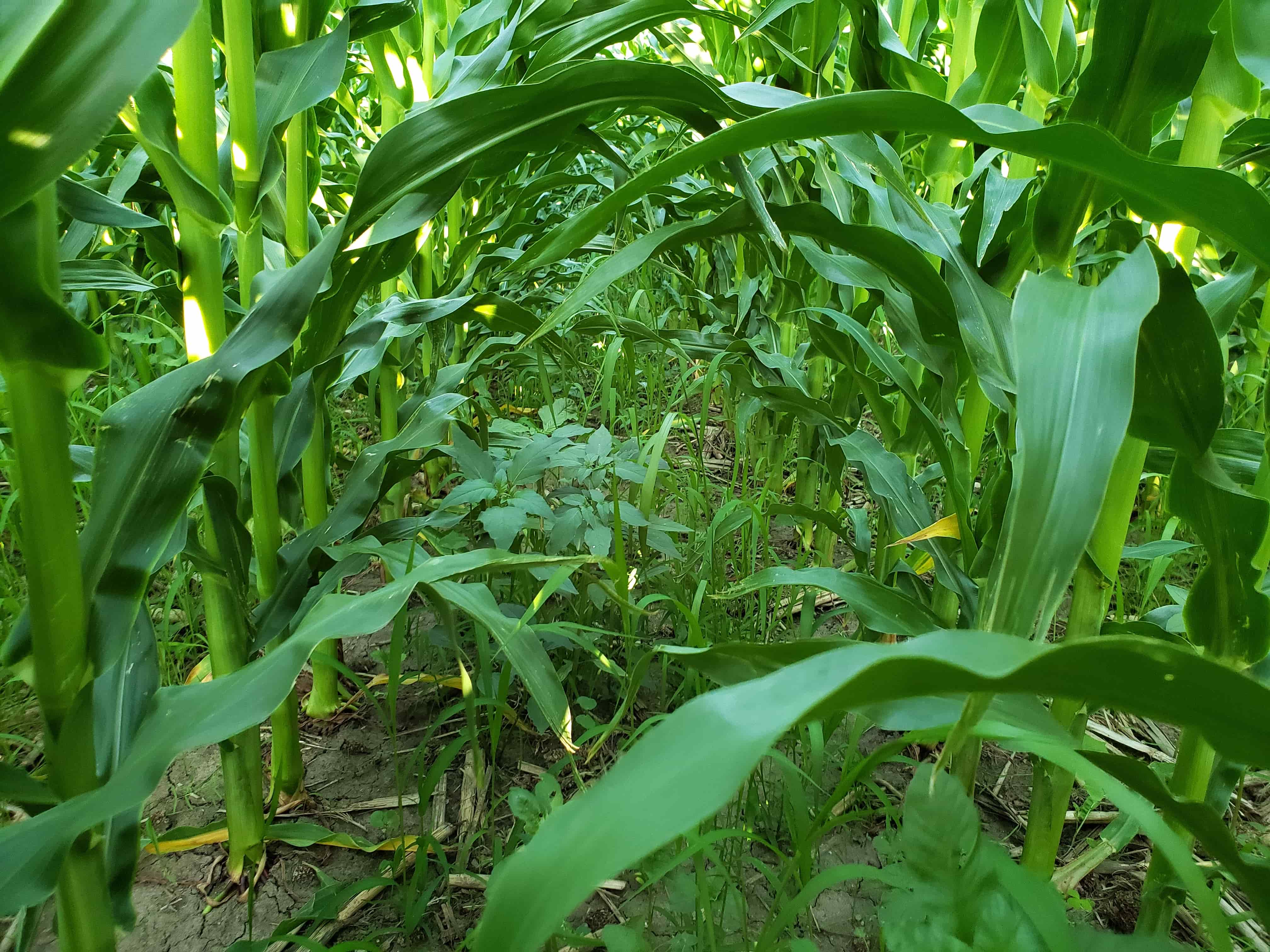
Montag’s Seipel says soil moisture played a big role in getting a cover crop stand established. “We also learned that interseeded cereal rye in 30-inch rows used some nitrogen in the V3 to V6 growth stage, plus was shaded too quickly by growing corn to get established,” he explains. “It survived better in 40- and 60-inch rows.”
All farmers in this program were impressed with the seeding rate accuracy of the Montag Gen II 2108, along with its ease of operation. Crop residue thickness and variability also wasn’t an issue for the rotary hoe. “We could adjust down pressure by raising or lowering the toolbar, allowing the hoe wheels to lift and fluff up the residue while the seed landed on bare soil underneath it," Seipel says. "The mulch over the top of the seed even allowed emergence post-harvest in soybean stubble or chopped corn stalks."
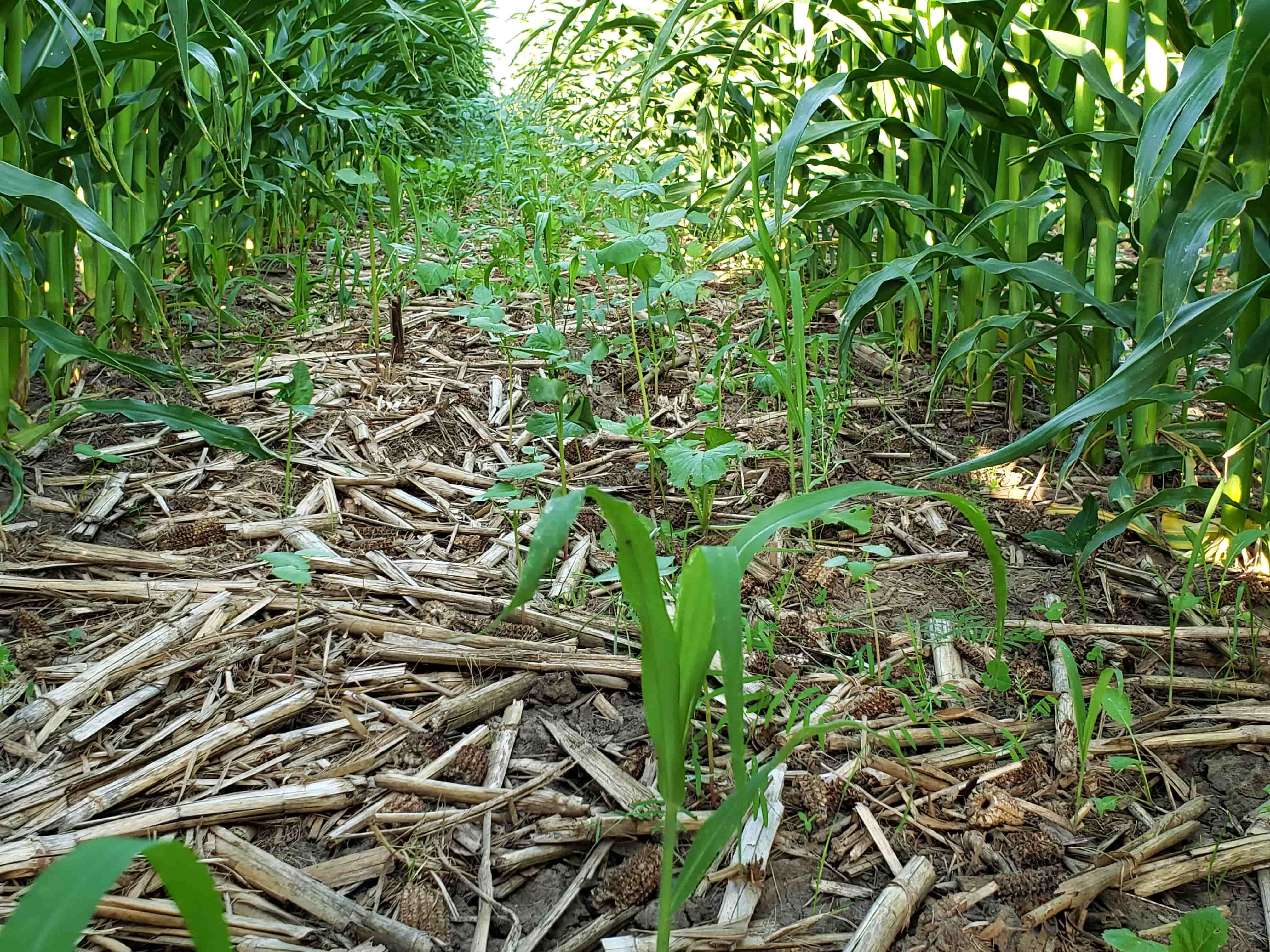
Seipel was pleased with the farmers’ reaction to this concept. “We definitely opened some eyes on what the possibilities are for using a rotary hoe as a seeding tool,” he concludes. Montag is no stranger to innovation and cover crops, having partnered with Hagie in recent years to boost cover crop acres by applying pre-harvest with its Generation 2 dry delivery system. Montag supports water quality efforts led by the Iowa Agriculture Water Alliance (IAWA) and is a member of its Business Council.
